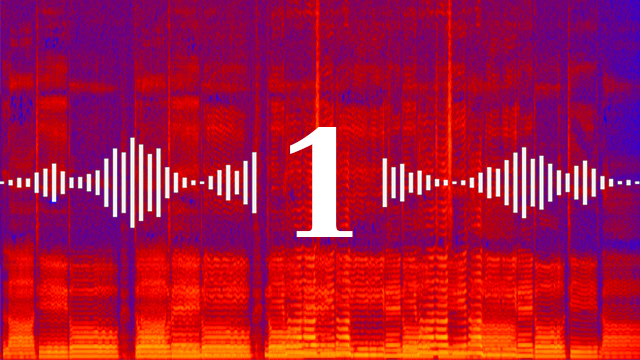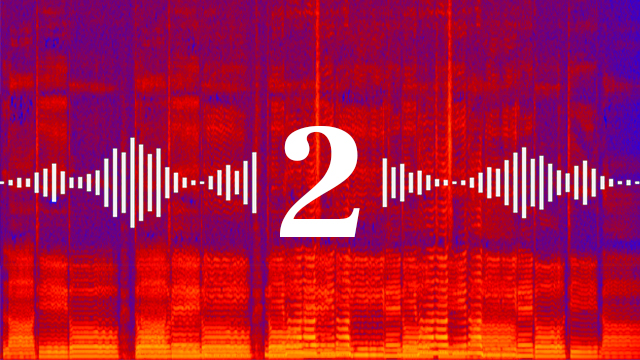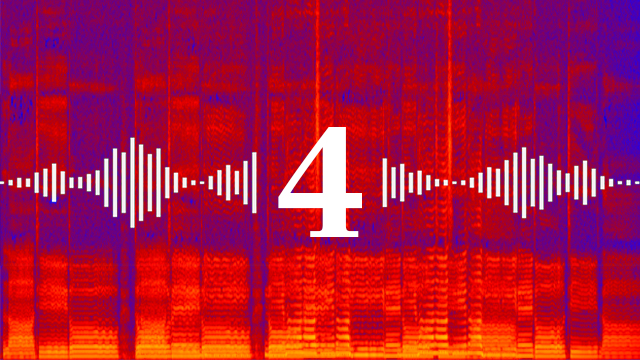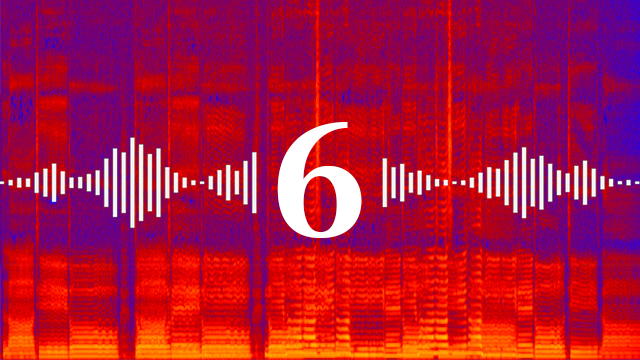Visualising Vocal Sound Resources.
A suite of interactive multimedia resources has been developed to support and enhance the professional development of choral conductors and teachers – for their work with choirs and/or in facilitating vocal and musicianship learning within the school sector, including digital musicianship. These resources are also suitable for individual choral singers, and are adaptable to in-person, remote and hybrid contexts. The software used to produce the spectrograms discussed in the videos is called Sonic Visualiser, developed by Cannam et. al at the Centre for Digital Music, Queen Mary University of London. It is a free, cross-platform application and is accessible and user-friendly. You will find all of the information you need to begin generating spectrograms using Sonic Visualiser in our Getting Started with Spectrograms user guide.
The resources are suitable for:
- Conductors who wish to explore ways of demonstrating concepts and approaches within a choral context
- Conductors and Teachers for personal and professional development
- Teachers who seek additional support in their vocal pedagogy and practice
- All those working in a variety of music learning and teaching contexts (in-person, remote, hybrid)
- Students who would like to explore and develop their understanding of their own voice and how it functions
- Learners who require additional support in visualising a range of musical concepts
Each multimedia package entails a video lecture exploring a different concept relating to choral singing and the production of a quality, resonant, supported tone (QRST). This discussion is supplemented with spectrographic examples illustrating various aspects of the concepts presented and/or challenges arising from them. Examples are drawn from a selection of recordings purposefully produced by experienced choral singers for the resources. These are not intended to be exhaustive, but simply a starting point for your own explorative relationship with spectrogram technology and the voice.
This series of videos has been designed sequentially so that, collectively, they provide an interactive journey through key concepts underpinning choral singing. While each video lecture is a standalone resource, we recommend that you progress through the videos in order, beginning with 1. Introduction to Spectrograms.
Each video is appended by self-directed activities, with pre-recorded audio samples for you to practise, demonstrate and explore. You can also record your own audio material for use with Sonic Visualiser. Activities are designed for different levels – Foundation (1), Intermediate (2) and Advanced (3) – and for in-person as well as remote environments. Facilitators can decide which level works best for their context and are free to extract and adapt tasks from different levels that best suit learning, teaching, and practice needs. Participant tasks may be completed independently or simultaneously with others from across the suite; tasks on exploring vowel shapes complement those on the harmonic series for example. Gamified activities can also be modified to suit the cohort and context. In essence, these spectrogram activities are flexible, so you can combine them with other practical musicianship and solfège exercises in a way that suits the age, size and experience of your cohort.
A ‘Global Activity’ called THE GALLERY OF VOICES may be facilitated with a small or large group at any stage of the user’s journey through the resources, although it works best when all videos have been viewed.
Once you have engaged with the introductory video and user guide, why not take Guiro’s Spectrogram Quiz to test yourself on how much you remember about spectrograms!
Note: Images that appear in this series of videos are used under an Adobe Stock licensing agreement and may not be copied or reproduced.
Vocal Folds image: “Pudding/ stock.adobe.com”. Vocal Tract image: “eveleen007/ stock.adobe.com”.
Why use Spectrograms?
Spectrographic analysis does not replace the musicianly ear, but verifies what the ear discerns.
It offers teacher and student an additional feedback tool for clarifying the nature of desirable vocal timbre and for building on discernible excellence.
Vocal quality can be both heard and seen.
– Richard Miller, On the Art of Singing (1996, 280).
The application of spectrograms to choral and vocal pedagogy is wide-ranging and can include visualisation, discussion and analysis of:
Resonance
- awareness of the natural resonance across harmonics in the voice; comparing changes in resonance when applying different approaches to producing sound; maximising resonant frequencies when tuning
Breath Management
- supporting the flow of air; sustaining good tone and natural resonance; conserving energy
Shaping Vowels
- forming well-shaped vowels that enhance natural resonance; understanding vowel shape relationships
Producing Clean Consonants
- engaging the vocal tract articulators efficiently; controlling vibrato; practising good diction and expression
Good Intonation
- fine-tuning of note onsets; sustaining tuning on longer, repeated pitches or descending scales; understanding intonation
Using spectrograms, conductors and teachers can demonstrate and visually illustrate technical elements of choral singing. The singer, then, can explore and interact with their own voice away from the notated music. Spectrograms do not replace notation; instead, they augment the user’s consideration of vocal sound and resonant, supported tone through interactive visualisation of what happens when we use our voice. Spectrographic images can also be used for reflection on vocal identity and sonic expectation. Interacting with spectrograms intentionally assists the conductor, teacher and singer in finding creative ways of visualising the sound that voices produce.
Created & Produced by Dr Barbara Dignam
Creative Team: Dr Róisín Blunnie, Dr Barbara Dignam, Shane Barriscale
Dublin City University, Ireland
References.
Chris Cannam, Christian Landone, and Mark Sandler, Sonic Visualiser: An Open Source Application for Viewing, Analysing, and Annotating Music Audio Files, in Proceedings of the ACM Multimedia 2010 International Conference.
Richard Miller, ‘Feeling, Hearing, and Seeing the Voice’ in On the Art of Singing (Oxford University Press, 1996), 273–5 (274); ‘Spectrographic Analysis of the Singing Voice’ in On the Art of Singing (Oxford University Press, 1996), 275–80 (280).
Further Reading.
Abrahams, Frank, and Paul D. Head, The Oxford Handbook of Choral Pedagogy (Oxford University Press, 2017)
Alldahl, Per-Gunnar, Choral Intonation (Stockholm: Gehrmans Musikförlag, 2008)
Bozeman, Kenneth, Practical Vocal Acoustics: Pedagogic Applications for Teachers and Singers, new edn. (Rowman and Littlefield, 2022); Kinesthetic Voice Pedagogy 2: Motivating Acoustic Efficiency (Inside View Press, 2021)
Cogan, Robert, New Images of Musical Sound (Harvard University Press, 1984)
Cottrell, Duane, Chapter 27 ‘Vocal Pedagogy in the Choral Rehearsal’ in The Oxford Handbook of Choral Pedagogy, ed. Frank Abrahams and Paul D. Head (Oxford University Press, 2017), pp 491 – 516
Davids, Julia, and Stephen LaTour, Vocal Technique: A Guide to Classical and Contemporary Styles for Conductors, Teachers and Singers, 2nd edn. (Waveland Press Inc, 2021)
Emmons, Shirley, and Constance Chase, Prescriptions for Choral Excellence: Tone, Text, Dynamic Leadership (Oxford University Press, 2006)
Falcão, Lília Maria Gomes, et al., ‘Spectrographic analysis of the effect of vocal warm-up on the voice of choir girls’ in Audiology Communication Research Vol. 19, Issue 4 (2014) doi: https://doi.org/10.1590/S2317-64312014000300001372)
Irene, Laurel, and David Harris, Voice Science Works
Malde, Melissa, Allen, MaryJean, and Kurt-Alexander Zeller, What Every Singer Needs to Know About the Body, 3rd edn. (Plural Publishing, 2017)
McCoy, Scott Jeffrey, Your Voice, an Inside View: Multimedia Voice Science and Pedagogy (Inside View Press, 2004)
Miller, Donald Gray, Resonance in Singing: Voice Building through Acoustic Feedback (Inside View Press, 2008)
Miller, Richard, On the Art of Singing (Oxford University Press, 1996)
Nix, John, and Amy Mafhews-Muffwill, ‘Does Real-Time Visual Feedback Enhance Perceived Aspects of Choral Performance?’ in Journal of Singing Vol. 68, No. 5 (National Association of Teachers of Singing, 2012) 495–509
Quist, Amanda Renee, Choral resonance: Re-examining concepts of tone and unification (PhD diss., unpubl., University of North Texas 2008)
Saus, Wolfgang, Choral Phonetics: How intonation depends on correct vowels. https://www.oberton.org/en/choralphonetics/
Thapen, Neil, The Pink Trombone for IMAGINARY (Mathematisches Forschungsinstitut Oberwolfach) The Pink Trombone website offers an interactive diagram for exploring different vowel shapes








